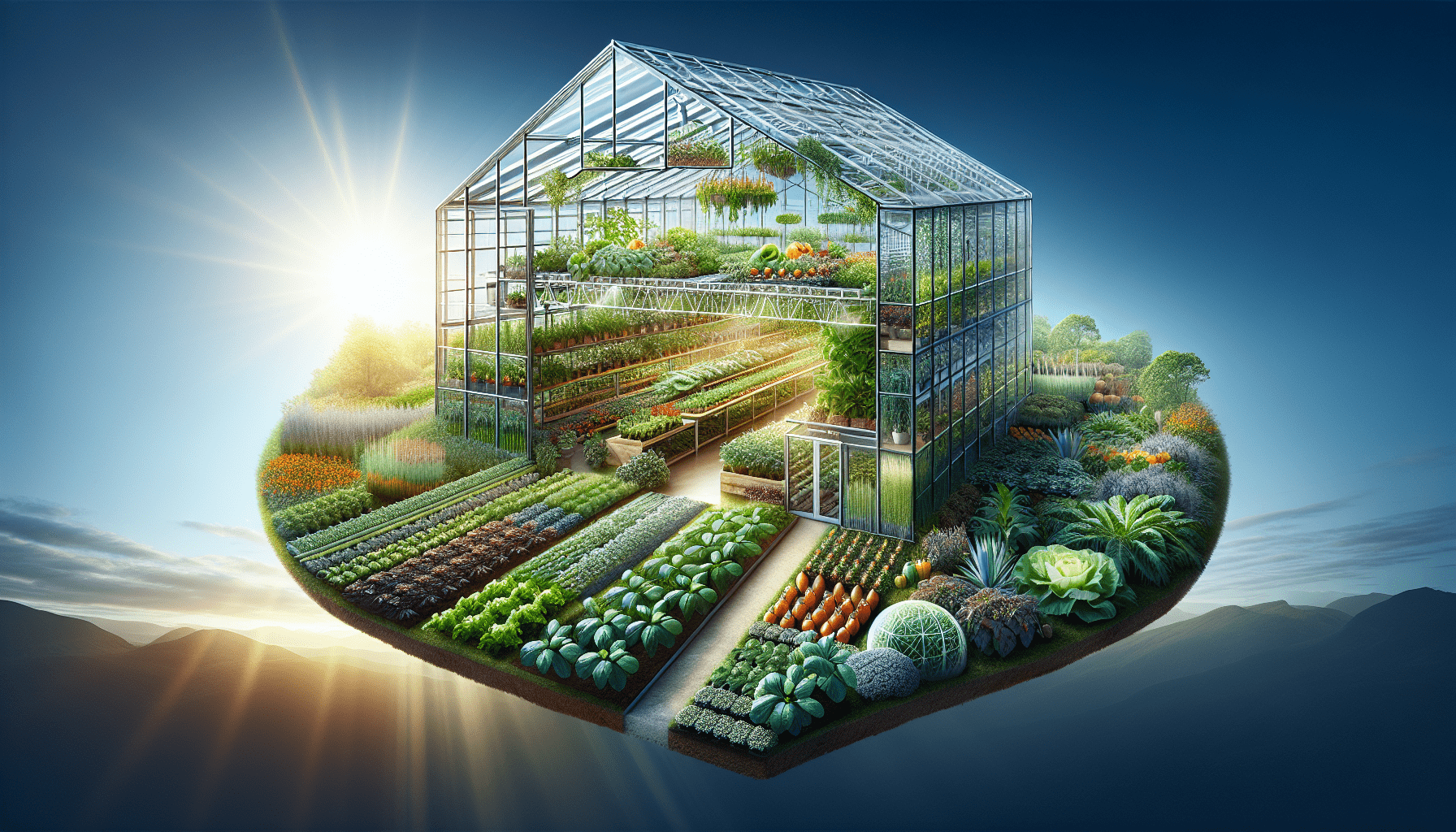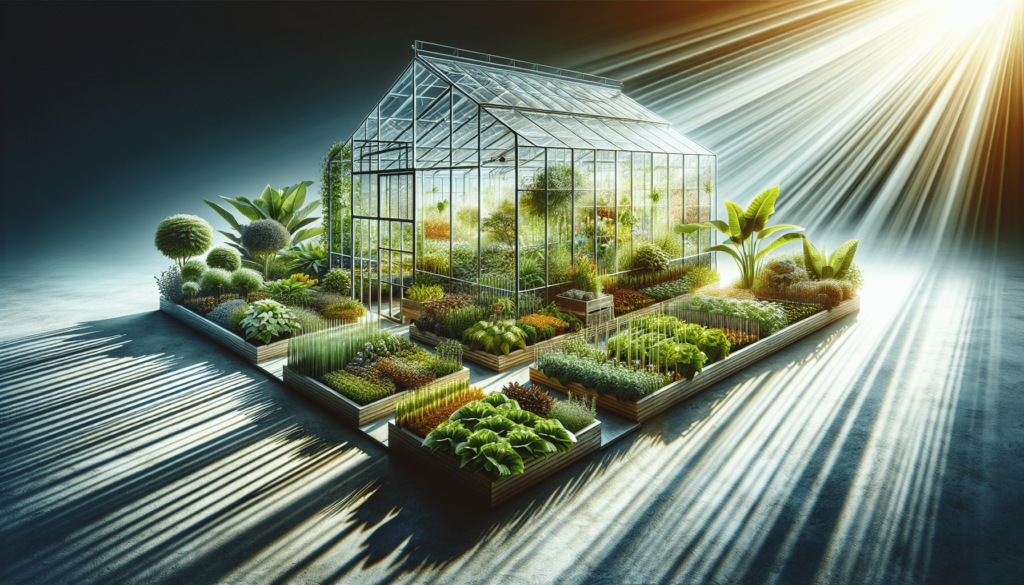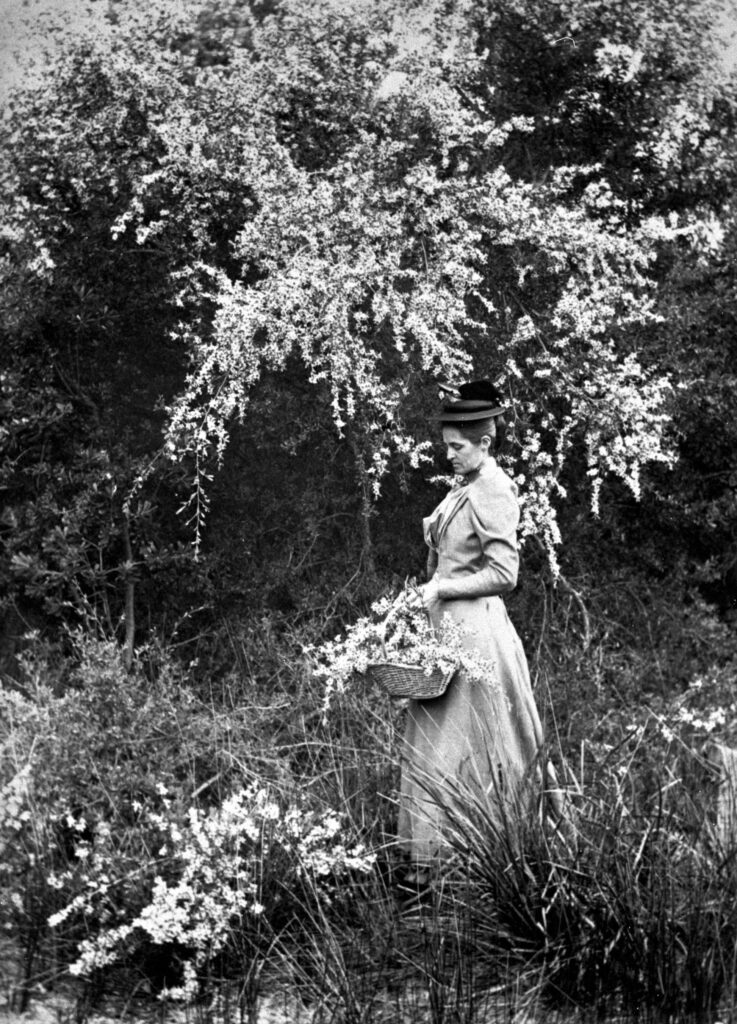Are you interested in starting your own greenhouse but unsure which design would be the most effective? Look no further! In this article, we will explore the different types of greenhouse designs and determine which ones work best for different climates and growing conditions. Whether you are a seasoned gardener or a beginner, this information will help you make an informed decision and set you up for gardening success. So let’s dive in and discover the greenhouse design that suits your needs perfectly!
Benefits of Greenhouse Designs
Greenhouse designs offer a range of benefits that can significantly enhance your crop production and gardening experience. By creating a controlled environment for plants, greenhouses provide optimal growing conditions, resulting in increased crop yield, extended growing seasons, and protection from pests and diseases. Additionally, greenhouse designs incorporate energy-efficient features that promote sustainability and a reduced environmental impact.
Increased crop yield
One of the most significant benefits of greenhouse designs is the potential for increased crop yield. By creating a controlled environment, greenhouse growers can manipulate various factors such as temperature, humidity, and light intensity to create an ideal growing environment for plants. This controlled environment enhances plant growth, leading to higher yields compared to traditional open-field cultivation. With better control over growing conditions, greenhouse designs enable year-round cultivation, ensuring a consistent supply of fresh produce regardless of the external climate.
Extended growing seasons
Greenhouse designs allow for the extension of the growing seasons, enabling growers to cultivate plants beyond their natural range. In regions with short summers or harsh winters, greenhouses offer protection from extreme weather conditions, allowing plants to thrive all year round. By providing a stable and controlled environment, greenhouse designs enable the cultivation of crops that would otherwise be limited to specific seasons. This extended growing season not only provides a wider variety of fresh produce but also opens up opportunities for niche market crops or specialty plants.
Protection from pests and diseases
Another advantage of greenhouse designs is the protection they provide against pests and diseases. The enclosed nature of greenhouses acts as a physical barrier, preventing insects, rodents, and larger animals from accessing the plants. Additionally, greenhouse designs can be equipped with screening systems to further minimize the entry of pests. The controlled environment also reduces the risk of diseases, as proper ventilation, air circulation, and humidity control can be implemented to create unfavorable conditions for pathogens. This protection against pests and diseases reduces the need for chemical pesticides and promotes organic and sustainable growing practices.
Energy efficiency
Greenhouse designs are increasingly incorporating energy-efficient features that reduce resource consumption and lower operational costs. These features include advanced insulation materials, efficient heating and cooling systems, and smart automation and control systems. Insulation helps retain heat during colder months and prevents excessive heat gain during summer, minimizing the need for additional heating or cooling. Energy-efficient ventilation systems ensure proper air exchange and temperature control without wasting energy. Lastly, automation and control systems allow growers to optimize energy use by programming lighting schedules, temperature settings, and irrigation systems. By prioritizing energy efficiency, greenhouse designs contribute to a sustainable and eco-friendly approach to agriculture.
Types of Greenhouse Designs
Greenhouses come in various designs, each with its unique characteristics and advantages. The choice of greenhouse design depends on several factors, including available space, climate and growing conditions, budget, and desired crops.
Lean-to Greenhouses
Lean-to greenhouses are attached to an existing structure, such as a house or barn. These designs take advantage of the shelter and stability provided by the attached building, making them a cost-effective option. Lean-to greenhouses are ideal for limited spaces or gardeners who want easy access to their plants from their homes.
Freestanding Greenhouses
Freestanding greenhouses are standalone structures that can be placed anywhere on the property. These designs offer more flexibility in terms of size, shape, and layout. Freestanding greenhouses can be tailored to specific needs and can range from small backyard structures to large commercial operations.
Attached Greenhouses
Attached greenhouses are similar to lean-to greenhouses but are not necessarily attached to a building. They can be constructed as an extension of an existing structure or as a separate area adjacent to a building. Attached greenhouses provide easy access to utilities and shelter from the elements.
Gothic Arch Greenhouses
Gothic arch greenhouses feature a high, rounded roof that maximizes interior space and allows for natural ventilation. The unique shape of these structures promotes efficient air circulation and ensures that hot air rises and escapes through the roof vents. Gothic arch greenhouses are visually appealing and provide ample headroom for taller plants.
A-Frame Greenhouses
A-frame greenhouses have a distinctive triangular shape, resembling the letter “A.” These designs are popular for their simplicity, cost-effectiveness, and ease of construction. A-frame greenhouses provide good snow-shedding capabilities, making them suitable for regions with heavy snowfall.
When choosing a greenhouse design, consider the available space, climate, and growing conditions, budget, and the crops you intend to cultivate. Each greenhouse design offers unique advantages, and selecting the right one is crucial to the success of your gardening venture.
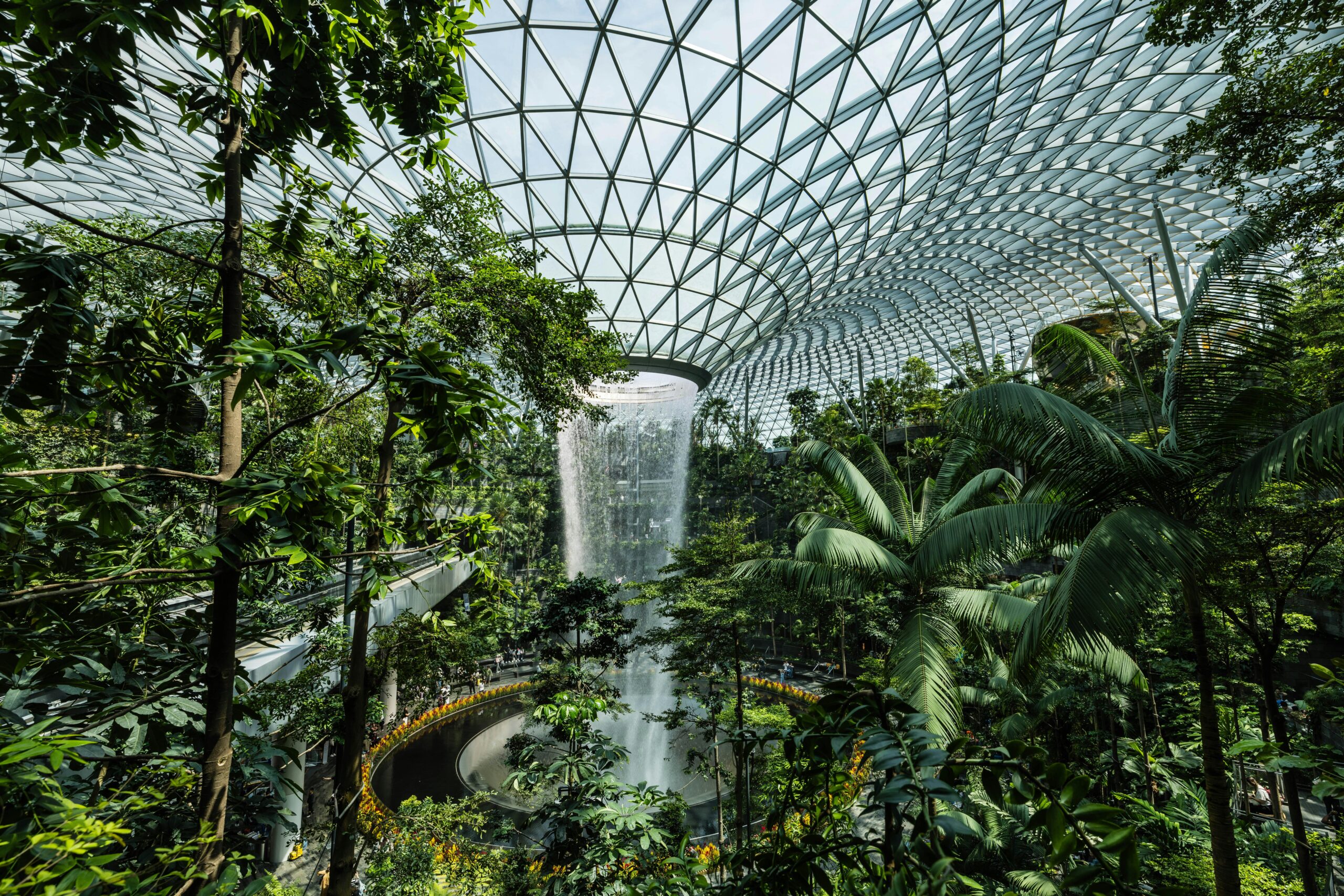
This image is property of images.pexels.com.
Factors to Consider When Choosing a Greenhouse Design
Several factors should be considered when choosing a greenhouse design that suits your needs, as each factor plays a crucial role in the performance and functionality of the structure.
Size and Space Availability
The available space on your property will dictate the size and layout of the greenhouse. Consider the dimensions needed to accommodate your desired crops, aisles for easy access, and any additional features such as storage or work areas. Ensure that there is sufficient space around the greenhouse for maintenance and future expansion if required.
Climate and Growing Conditions
The local climate and environmental conditions play a significant role in determining the appropriate greenhouse design. Consider the average temperatures, sunlight exposure, humidity levels, wind patterns, and precipitation in your region. Certain designs are better suited to specific climates, while others may require additional features such as insulation or shade systems to adapt to local conditions.
Budget
Your budget will influence the choice of greenhouse design, as each design varies in terms of cost. Consider not only the initial construction expenses but also the long-term operational costs, such as heating, cooling, and maintenance. It is essential to strike a balance between your budgetary constraints and the desired features and functionality of the greenhouse.
Desired Crops
Different crops have varying requirements for temperature, humidity, lighting, and space. Consider the type of crops you intend to cultivate to determine the necessary features and specifications of the greenhouse design. Some crops may require additional cooling systems, while others may benefit from more natural sunlight exposure. Understanding the needs of your desired crops will guide you in selecting a greenhouse design that facilitates their optimal growth and productivity.
Considering these factors when choosing a greenhouse design will ensure that your structure meets your specific needs and maximizes the potential for successful and productive cultivation.
Key Features of Successful Greenhouse Designs
Creating a successful greenhouse design involves considering several key features that contribute to the functionality, efficiency, and productivity of the structure.
Structural Materials
The choice of structural materials is crucial for a durable and long-lasting greenhouse design. Common options include glass, polycarbonate panels, and polyethylene films. Glass provides excellent light transmission but can be fragile and more expensive. Polycarbonate panels offer good insulation and durability but may reduce light transmission. Polyethylene films are cost-effective and provide diffused light, but they may require replacement over time. Choose materials that suit your budget, climate, and desired lifespan of the greenhouse.
Ventilation system
An efficient ventilation system is essential for maintaining proper airflow, controlling temperature, and preventing the buildup of excess humidity. Natural ventilation can be achieved through the strategic placement of vents, windows, or adjustable roof panels. Alternatively, mechanical ventilation systems, such as exhaust fans or evaporative coolers, can be installed for more precise control. Proper ventilation also helps prevent the spread of diseases and enhances plant health and growth.
Insulation
Insulation is crucial for regulating temperature and retaining heat in colder climates. Adequate insulation helps reduce energy consumption for heating and cooling, ensuring a stable and controlled environment regardless of external weather conditions. Common insulation materials include double or triple glazing, polyethylene foam, or specialized insulating films. Insulate not only the walls but also the roof and flooring to minimize heat loss.
Lighting system
In regions with limited sunlight or for growers who wish to extend the growing season, supplemental lighting systems are essential. High-quality, energy-efficient grow lights provide the necessary spectrum and intensity of light required for optimal plant growth. LED grow lights are particularly popular due to their energy efficiency, long lifespan, and customizable light spectrums. The lighting system should be adjustable to accommodate the specific needs of different crops during different growth stages.
Automation and control systems
Automation and control systems enhance the efficiency and ease of operation of the greenhouse. These systems can include automated irrigation systems, climate control systems, lighting timers, and even remote monitoring and control capabilities. By automating routine tasks and ensuring accurate control, growers can save time and resources while maintaining optimal growing conditions.
Incorporating these key features into your greenhouse design will significantly contribute to its success and the overall performance of your plants. Consider your specific needs, budget, and desired crop requirements to determine the necessary features for your greenhouse design.

This image is property of images.pexels.com.
Top Greenhouse Designs
Several greenhouse designs have proven to be popular and successful among growers due to their benefits and functionalities. Here are some of the top greenhouse designs:
Traditional Glass Greenhouses
Traditional glass greenhouses exude elegance and provide excellent light transmission. Their solid structure and insulation properties make them suitable for a wide range of climates. Glass greenhouses are durable and long-lasting, offering growers a timeless design that can enhance their gardening experience.
Polyethylene Film Greenhouses
Polyethylene film greenhouses are cost-effective and easy to install. The translucent polyethylene film provides diffused light, which is beneficial for many plants. These greenhouses are lightweight and can be easily repositioned or expanded as needed. Polyethylene film greenhouses are particularly popular among beginner gardeners or growers with limited budgets.
Polycarbonate Panel Greenhouses
Polycarbonate panel greenhouses offer excellent insulation properties and durability. The panels provide diffused light, reducing the risk of sunburn or scorching for sensitive plants. Polycarbonate panel greenhouses are resistant to impacts, hail, or extreme weather conditions, making them suitable for regions with challenging climate conditions.
Hoophouse Greenhouses
Hoophouse greenhouses, also known as tunnel or high tunnel greenhouses, are cost-effective and easy to assemble. These semi-circular or arched structures consist of a series of hoops covered in plastic film, creating a tunnel-like environment for plants. Hoophouse greenhouses are ideal for seasonal or temporary cultivation and are often used for starting seedlings, extending the growing season, or protecting crops from frost or pests.
Plastic Bottle Greenhouses
Plastic bottle greenhouses are innovative and environmentally friendly designs that utilize recycled materials. These structures involve collecting and stacking plastic bottles to create walls filled with air pockets for insulation. Plastic bottle greenhouses are budget-friendly and provide a unique and colorful alternative to traditional designs. They are ideal for small-scale or DIY projects, promoting sustainability and recycling efforts.
These top greenhouse designs offer a range of options suited to different budgets, climates, and growing needs. Consider the advantages and limitations of each design to determine the best fit for your gardening goals.
Innovative Greenhouse Designs
Innovation in greenhouse designs has led to the development of unique and forward-thinking structures that push the boundaries of traditional gardening methods. These innovative designs incorporate advanced technologies, sustainable practices, and creative solutions to optimize plant growth and environmental impact.
Vertical Greenhouses
Vertical greenhouses maximize space utilization by incorporating multi-level growing systems. These designs stack plants vertically, utilizing vertical structures such as shelving units or hanging baskets. Vertical greenhouses are particularly beneficial for urban environments or areas with limited space. They can be manually or automatically irrigated and can utilize efficient lighting systems for optimal plant growth.
Aquaponics Greenhouses
Aquaponics greenhouses combine hydroponics and aquaculture to create a symbiotic relationship between plants and fish. The waste produced by the fish provides nutrients for the plants, while the plants filter and clean the water for the fish. Aquaponics greenhouses offer a sustainable and efficient method of cultivation, reducing water usage and promoting organic practices. These systems can be integrated into greenhouse designs to create a closed-loop ecosystem.
Passive Solar Greenhouses
Passive solar greenhouses maximize sunlight absorption and heat retention through strategic design and orientation. These greenhouses utilize materials with high thermal mass, such as concrete or stone, to absorb and store heat during the day and release it at night. Passive solar greenhouses can be designed with the appropriate angles and glazing to optimize light penetration and solar heating. This design reduces reliance on energy-consuming heating systems and utilizes the sun’s energy for plant growth.
Greenhouse Integrated with Building Structure
Greenhouse designs that integrate with building structures combine traditional gardening with sustainable architecture. These designs leverage the existing structure to provide stability, insulation, and energy efficiency. Greenhouses can be integrated into rooftops, balconies, or walls, extending the growing space while minimizing their environmental footprint. Integrated greenhouse designs contribute to sustainable urban development and promote the fusion of nature and architecture.
Underground Greenhouses
Underground greenhouses, also known as earth-sheltered greenhouses, utilize the natural insulation properties of the earth to create a stable and energy-efficient growing environment. These designs are partially or entirely buried underground, reducing heat loss and minimizing temperature fluctuations. Underground greenhouses benefit from the earth’s thermal mass, which helps regulate temperature and reduce energy consumption. These unique designs provide a natural and sustainable method for year-round cultivation.
These innovative greenhouse designs demonstrate the potential for creativity, sustainability, and efficiency in modern agriculture. By embracing new technologies and alternative growing methods, greenhouse growers can optimize their productivity while minimizing their environmental impact.

This image is property of images.pexels.com.
Greenhouse Design Considerations for Different Climates
When designing a greenhouse, it is essential to consider the specific challenges posed by different climate conditions. From cold, hot, humid, windy, to dry climates, each type of climate requires specific design features to ensure optimal plant growth and survival.
Cold Climates
In cold climates, insulation and heating systems are crucial for maintaining a suitable growing environment. Double or triple glazing, insulated walls, and an efficient heating system are essential for retaining heat and preventing freezing temperatures. Cold frames or hoop covers can be useful for protecting crops during extremely cold weather. Additionally, snow management systems should be considered to prevent excessive snow buildup on the roof.
Hot Climates
In hot climates, excessive heat can be detrimental to plant health. Shade systems, such as shade cloths or retractable roof panels, help reduce sun exposure and prevent heat stress. Adequate ventilation and air circulation are essential to dissipate excess heat and maintain a comfortable temperature. Evaporative cooling systems or misting systems can be installed to lower the temperature and maintain humidity levels.
Humid Climates
In humid climates, proper ventilation and air circulation are critical for preventing the buildup of excessive humidity. Ventilation systems should be designed to allow for efficient air exchange and reduce the risk of fungal diseases. Consider incorporating dehumidification systems or fans to maintain optimal humidity levels. Additionally, selecting crops that can withstand high humidity levels is important to ensure successful cultivation.
Windy Climates
In windy climates, the greenhouse structure should be designed to withstand strong winds and prevent damage. Reinforced framing, windbreaks, and sturdy anchoring systems are crucial for stability. Choosing wind-resistant materials such as polycarbonate panels instead of glass can also minimize the risk of breakage. Additionally, windbreaks or planting wind-resistant crops around the greenhouse can provide additional protection.
Dry Climates
In dry climates, water conservation and irrigation systems are key considerations. Greenhouse designs should incorporate efficient water collection and storage systems to maximize water usage. Drip irrigation systems or hydroponic setups can help reduce water waste and ensure targeted watering. Additionally, shading systems can help reduce water loss through evaporation.
By tailoring greenhouse designs to the specific challenges posed by different climates, growers can create optimal growing conditions for their plants, regardless of the external environment.
Common Mistakes in Greenhouse Design
When designing a greenhouse, certain mistakes can hinder its functionality and productivity. Being aware of these common pitfalls can help avoid costly errors and ensure the success of your greenhouse venture.
Poor site selection
Choosing the wrong site for your greenhouse can result in suboptimal growing conditions. Factors such as sunlight exposure, drainage, access to utilities, and proximity to trees or buildings need to be considered. Select a site that receives adequate sunlight throughout the day and has proper water drainage to prevent waterlogging. Avoid areas with excessive shade or where the greenhouse will be obstructed by nearby structures or trees.
Improper ventilation
Inadequate or improper ventilation is a common mistake in greenhouse design. Insufficient airflow can lead to stagnant air, high humidity, and increased disease susceptibility. Proper ventilation allows for the exchange of fresh air, helps regulate temperature, and prevents the buildup of excess humidity. Incorporate vents, windows, or roof panels strategically to promote cross ventilation and ensure adequate air exchange.
Inadequate insulation
Insufficient insulation can lead to temperature fluctuations and increased energy consumption. Proper insulation is essential for maintaining a stable and controlled growing environment. Insulate not only the walls but also the roof and flooring to prevent heat loss. In colder climates, inadequate insulation can result in freezing temperatures that can damage plants. Choose appropriate insulation materials and ensure proper installation to create an energy-efficient greenhouse.
Lack of proper drainage
Poor drainage can lead to waterlogged soil, root rot, and a decline in plant health. Ensure that your greenhouse design includes proper drainage systems to facilitate the removal of excess water. This can include incorporating gravel or drainage tiles in the flooring or using raised beds with good drainage properties. Proper drainage prevents water buildup and maintains optimal soil moisture levels for healthy plant growth.
Inadequate heating or cooling systems
Failure to provide adequate heating or cooling systems can lead to extreme temperature fluctuations that can stress or damage plants. Depending on your climate, consider incorporating heating systems such as heaters, underfloor heating, or radiant heating. Cooling systems such as fans, evaporative coolers, or shade systems are essential in hot climates. Ensure that these systems are properly sized and installed to meet the specific needs of your greenhouse.
Avoiding these common mistakes in greenhouse design will help create an environment that promotes plant growth, productivity, and overall success.
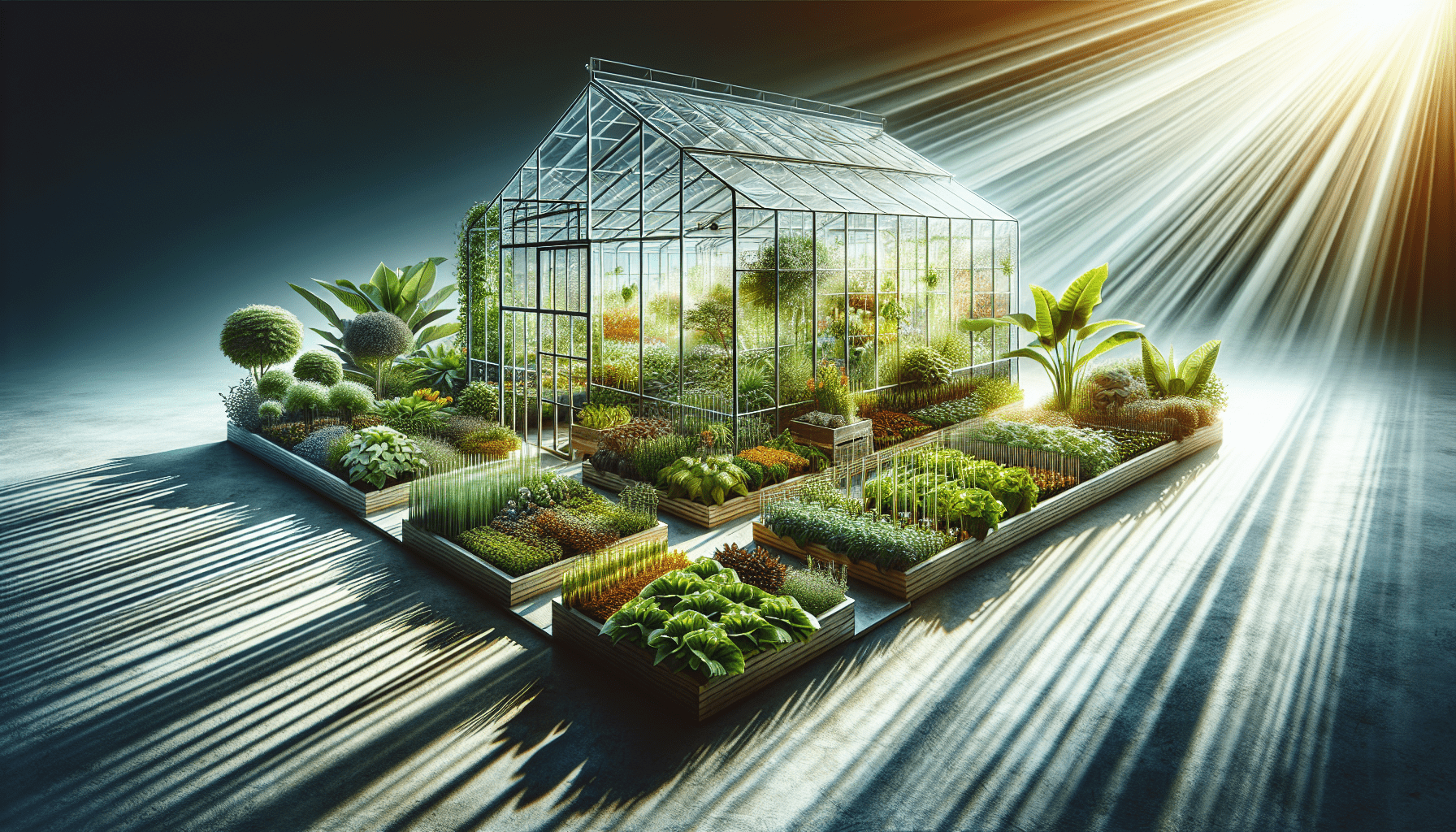
Greenhouse Design Trends
As the agricultural industry evolves and embraces new technologies and sustainable practices, certain trends have emerged in greenhouse design. These trends reflect the industry’s commitment to efficiency, sustainability, and innovation.
Sustainable and eco-friendly materials
The use of sustainable and eco-friendly materials in greenhouse construction has gained popularity in recent years. This trend involves using recycled or renewable materials, as well as reducing the environmental impact of the greenhouse’s construction and operation. Greenhouses constructed with sustainable materials promote resource conservation and less reliance on fossil fuels, contributing to a greener and more sustainable agricultural sector.
Integration with renewable energy sources
Greenhouse designs are increasingly integrating renewable energy sources to offset energy consumption and reduce environmental impact. Solar panels, wind turbines, or geothermal systems can be incorporated into greenhouse designs to generate clean energy for heating, cooling, or powering the facility. This trend aligns with the industry’s commitment to reducing greenhouse gas emissions and promoting sustainable energy practices.
Vertical farming techniques
Vertical farming techniques, which involve growing plants in stacked layers or vertically inclined structures, are becoming more prevalent in greenhouse designs. Vertical farming maximizes space utilization and enables growers to cultivate a large volume of plants in a smaller footprint. By utilizing efficient lighting systems, hydroponics, and automation, vertical farming techniques allow for year-round cultivation, reduced water usage, and increased crop productivity.
Smart and automated systems
With advancements in technology, greenhouse designs are incorporating smart and automated systems to streamline operations and optimize plant growth. These systems can include automated irrigation, climate control, and lighting systems. Sensors and monitoring devices collect data on temperature, humidity, light levels, and other environmental parameters, allowing growers to make informed decisions and remotely manage their greenhouse. Automation and control systems increase efficiency, accuracy, and resource conservation while reducing labor requirements.
Adaptable and modular designs
Flexibility and adaptability are becoming more important in greenhouse designs. Modular designs allow growers to easily expand or adjust the greenhouse layout based on changing needs and crops. This trend offers scalability and the ability to optimize space utilization, ensuring that the greenhouse can adapt to future requirements. Adaptable and modular greenhouse designs allow for flexibility in crop rotation, experimentation with new techniques, and easier integration of emerging technologies.
These greenhouse design trends reflect the industry’s commitment to sustainability, efficiency, and continuous improvement. By embracing these trends, greenhouse growers can contribute to a more environmentally friendly and economically viable agricultural future.
Conclusion
Selecting the best greenhouse design for your specific needs requires consideration of various factors, including available space, climate and growing conditions, budget, and desired crops. Each greenhouse design offers distinct advantages and trade-offs, allowing growers to tailor their structures to their unique requirements.
Considering key features such as structural materials, ventilation systems, insulation, lighting systems, and automation and control systems promotes optimal plant growth, productivity, and resource conservation. Additionally, being aware of common mistakes in greenhouse design helps avoid costly errors and ensures the success of your greenhouse venture.
Explore the top greenhouse designs, which include traditional glass greenhouses, polyethylene film greenhouses, polycarbonate panel greenhouses, hoophouses, and even plastic bottle greenhouses. These designs cater to varying budgets, climates, and growing needs, offering a wide range of options.
Furthermore, innovative greenhouse designs push the boundaries of traditional gardening methods, incorporating vertical farming techniques, aquaponics systems, passive solar designs, greenhouse integration with building structures, and underground setups. These innovative designs maximize productivity, sustainability, and efficiency.
Lastly, greenhouse design considerations for different climates guide growers on specific challenges and solutions for cold, hot, humid, windy, and dry climates. Adapting the greenhouse design to these conditions ensures optimal growing conditions and plant health.
In conclusion, the best greenhouse design depends on various factors, including your specific needs, available resources, and intended crops. Consulting with experts or experienced greenhouse growers can provide valuable insights and guidance. Regular maintenance and adjustments are key to optimizing the performance of your greenhouse and ensuring long-term success in your gardening endeavors.
